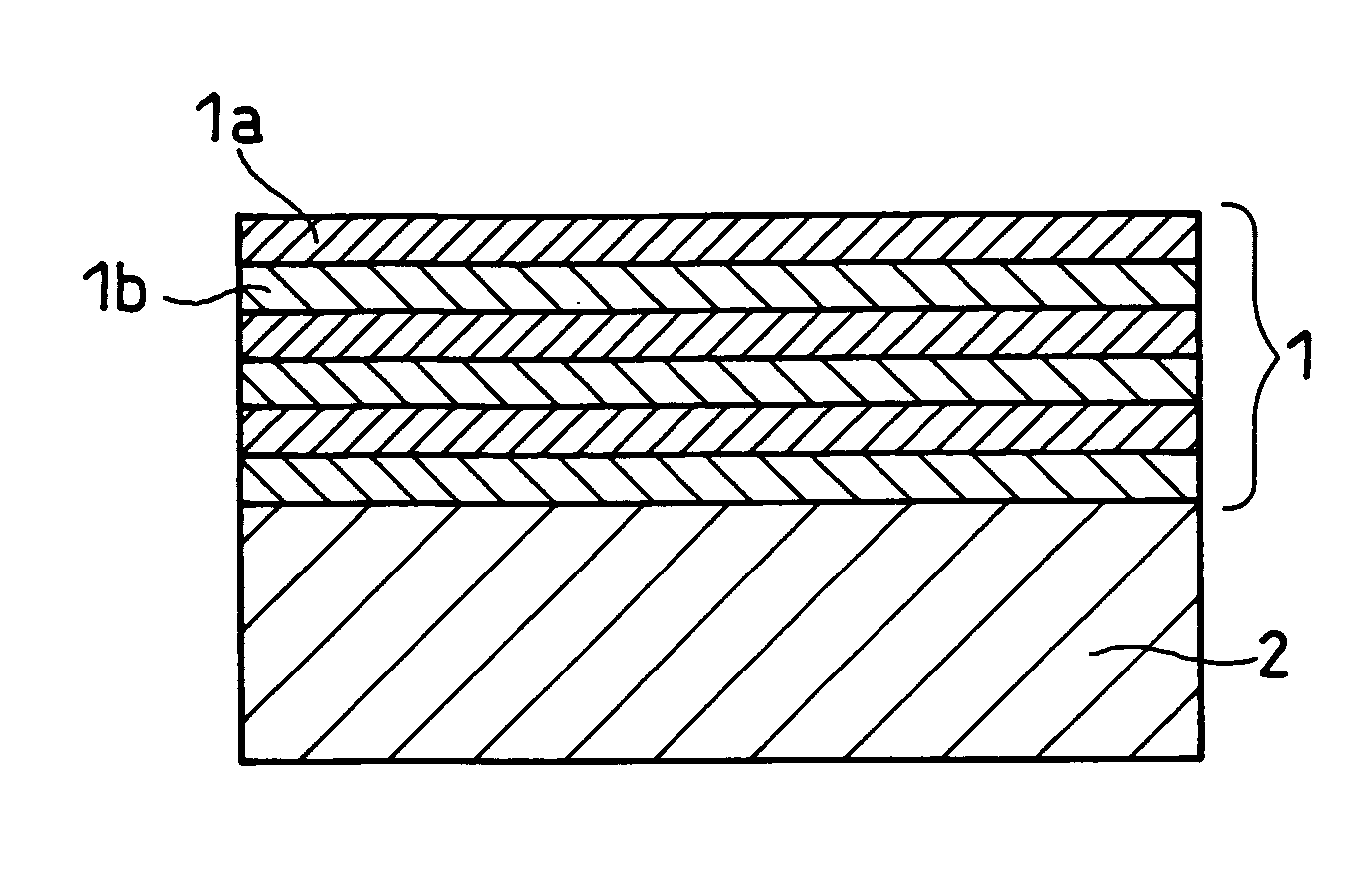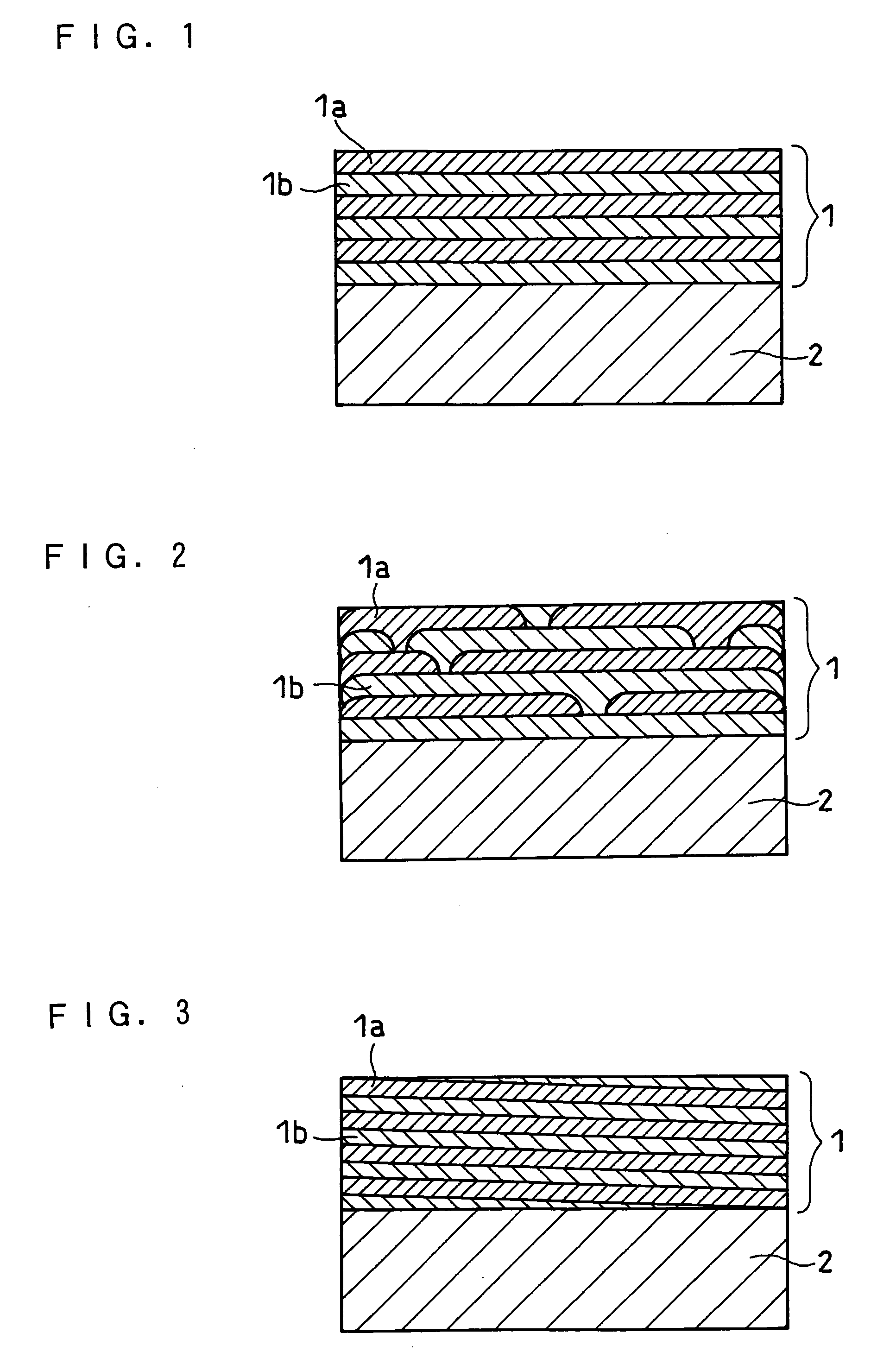Negative electrode for lithium ion secondary battery, production method thereof and lithium ion secondary battery comprising the same
- Summary
- Abstract
- Description
- Claims
- Application Information
AI Technical Summary
Benefits of technology
Problems solved by technology
Method used
Image
Examples
example 1
(Battery 1)
(i) Production of Positive Electrode
[0105] With 100 parts by weight of lithium cobalt oxide (LiCoO2) having an average particle size of 10 μm was mixed 3 parts by weigh of acetylene black as a conductive material to prepare a mixture. The resulting mixture was mixed with a N-methyl-2-pyrrolidone (NMP) solution of polyvinylidene fluoride (PVDF) as a binder such that 4 parts by weight of PVDF was added to the mixture, followed by kneading to prepare a positive electrode material mixture paste. The obtained positive electrode material mixture paste was applied onto both surfaces of a current collector sheet made of an aluminum foil, followed by drying and rolling to produce a positive electrode.
(ii) Production of Negative Electrode
[0106] The process for producing a negative electrode will be described later below.
(iii) Production of Battery
[0107] A 17500-type cylindrical battery as shown in FIG. 6 was produced using the above-produced positive electrode and negativ...
example 2
[0145] In this example, comparisons were made between batteries having a propylene carbonate (PC)-containing electrolyte and batteries having a non-PC-containing electrolyte in terms of initial capacity, charge / discharge efficiency and discharge capacity ratio at −10° C.
(Batteries 2 and 3)
[0146] Two different electrolytes were prepared: an electrolyte prepared by dissolving LiPF6 in a solvent mixture of propylene carbonate (PC) and dimethyl carbonate (DMC) at a volume ratio of 6:4 at a LiPF6 concentration of 1 mol / L; and another electrolyte prepared by dissolving LiPF6 in a solvent mixture of EC and DMC at a volume ratio of 1:3 at a LiPF6 concentration of 1 mol / L.
[0147] Batteries 2 and 3 were produced in the same manner as the battery 1 was produced except that the above two different electrolytes were used. The battery 2 included the electrolyte containing the solvent mixture of PC and DMC. The battery 3 included the electrolyte containing the solvent mixture of EC and DMC.
(C...
example 3
[0170] In this example, an investigation was carried out on the effective range of oxygen ratio in the first layer with no or a low oxygen ratio and the effective range of oxygen ratio in the second layer with a higher oxygen ratio. The investigation was performed by changing the flow rate of the oxygen gas introduced into the vacuum chamber of the vapor deposition equipment shown in FIG. 4 and changing the oxygen gas supply time.
(Battery 4)
[0171] A battery 4 was produced in the same manner as the battery 1 was produced except that, in the production of the negative electrode, the flow rate of the oxygen gas was set at 30 sccm. The pressure in the vacuum chamber was 1.8×10−4 Torr during the supply of the oxygen gas, and 6.0×10−5 Torr during the interval of the supply of the oxygen gas.
[0172] The negative electrode active material layer formed on each surface of the current collector had a thickness of 7.1 μm. The first layer and the second layer each had a thickness of 50 nm.
[0...
PUM
 Login to View More
Login to View More Abstract
Description
Claims
Application Information
 Login to View More
Login to View More - R&D
- Intellectual Property
- Life Sciences
- Materials
- Tech Scout
- Unparalleled Data Quality
- Higher Quality Content
- 60% Fewer Hallucinations
Browse by: Latest US Patents, China's latest patents, Technical Efficacy Thesaurus, Application Domain, Technology Topic, Popular Technical Reports.
© 2025 PatSnap. All rights reserved.Legal|Privacy policy|Modern Slavery Act Transparency Statement|Sitemap|About US| Contact US: help@patsnap.com



